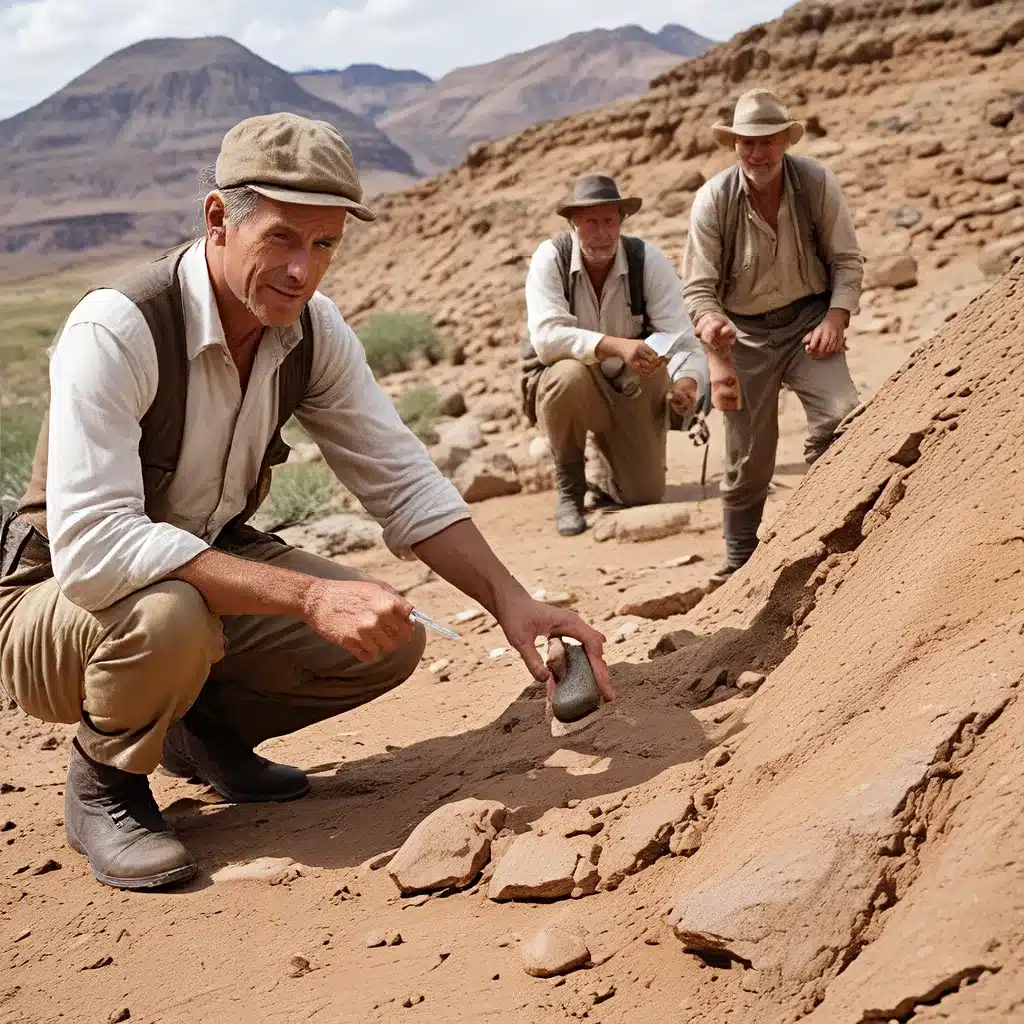
In the vast expanse of Earth’s history, the Mesozoic Era stands as a testament to the awe-inspiring wonders of the natural world. This epoch, often referred to as the “Age of Dinosaurs,” has captivated the imaginations of scientists, historians, and the general public alike. Through the tireless efforts of pioneering archaeologists and paleontologists, the mysteries of this ancient era have slowly been unraveled, shedding light on the diverse array of prehistoric life that once roamed the planet.
Uncovering Prehistoric Treasures
One of the most significant archaeological discoveries in recent years was the unearthing of the Dreadnoughtus schrani, a massive sauropod dinosaur that lived during the Late Cretaceous period, approximately 77 million years ago. The nearly complete skeleton, discovered in the Patagonian region of Argentina, has provided researchers with an unprecedented glimpse into the lives of these colossal creatures.
Something went wrong during the recovery of the Dreadnoughtus specimen, but the dedication and perseverance of the archaeological team ultimately led to its successful excavation. The sheer size of the dinosaur, estimated to have weighed over 65 tons, has challenged previous assumptions about the limits of prehistoric life and the capabilities of these ancient giants.
Technological Advancements in Archaeology
The field of archaeology has undergone a remarkable transformation in recent decades, with the advancement of modern technology playing a crucial role in unlocking the secrets of the past. From high-resolution imaging techniques to sophisticated dating methods, these technological breakthroughs have revolutionized the way archaeologists approach their work.
One such example is the use of ground-penetrating radar, which allows researchers to map and analyze the subterranean landscape without the need for extensive excavation. This non-invasive technology has enabled the discovery of previously unknown archaeological sites, including the remains of ancient civilizations and their buried structures.
Uncovering the Mysteries of Ancient Cultures
Alongside the remarkable discoveries of prehistoric life, archaeologists have also made significant strides in understanding the complexities of ancient human societies. From the enigmatic Göbekli Tepe in Turkey to the towering Moai statues of Easter Island, these archaeological sites have captivated the public’s imagination and challenged our understanding of the past.
The Explorers Club, a prestigious organization dedicated to the advancement of field exploration and scientific inquiry, has played a pivotal role in many of these groundbreaking discoveries. Through the tireless efforts of its members, who have pushed the boundaries of human knowledge and endurance, the world has gained a deeper appreciation for the rich tapestry of human history.
Emerging Theories and Controversies
As new archaeological discoveries continue to emerge, the field of ancient history has become a hotbed of debate and discussion. Competing theories about the origins of human civilization, the causes of mass extinctions, and the true nature of ancient cultures have sparked lively discussions among scholars and the public alike.
One such example is the ongoing debate surrounding the Younger Dryas impact hypothesis, which suggests that a cosmic impact event may have been responsible for the sudden climate change and extinction of megafauna at the end of the Pleistocene epoch. While this theory is still heavily debated, it highlights the importance of an open and critical approach to the interpretation of archaeological evidence.
The Future of Archaeology and Paleontology
As we look to the future, the possibilities for further discoveries and advancements in the field of archaeology and paleontology are truly exciting. With the continued development of cutting-edge technologies, from advanced imaging techniques to sophisticated data analysis tools, researchers will undoubtedly uncover new insights into the past that will challenge and expand our understanding of the world we inhabit.
The Lost Kingdoms website, dedicated to exploring the rich tapestry of ancient civilizations and their cultural legacies, is a testament to the enduring fascination with the mysteries of the past. By sharing the latest discoveries and cutting-edge research, this platform aims to ignite the public’s curiosity and foster a deeper appreciation for the remarkable achievements of our ancestors.
In the ever-evolving landscape of archaeological and paleontological research, the contributions of pioneering scientists and explorers will continue to shape our understanding of the world’s distant past. As we uncover more of the hidden treasures that lie buried beneath the earth, the excitement and wonder of these extraordinary discoveries will continue to captivate and inspire generations to come.


